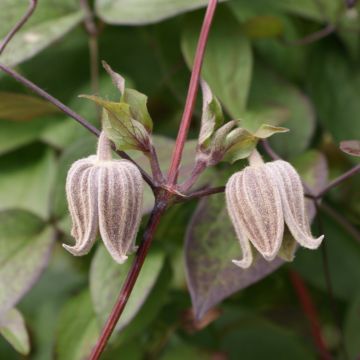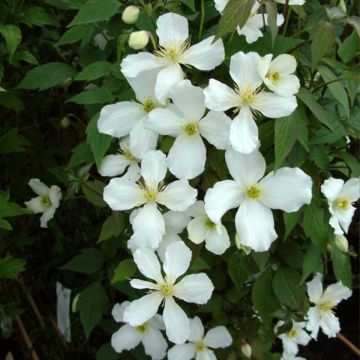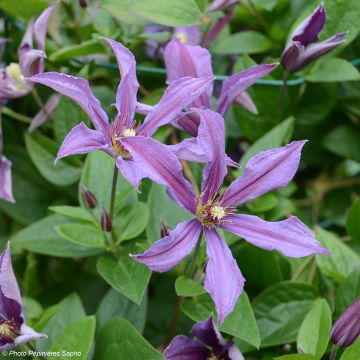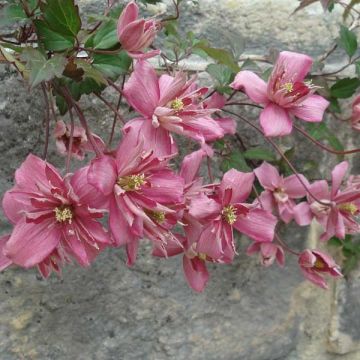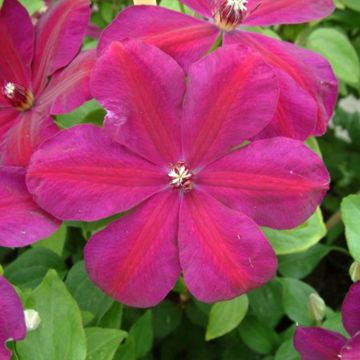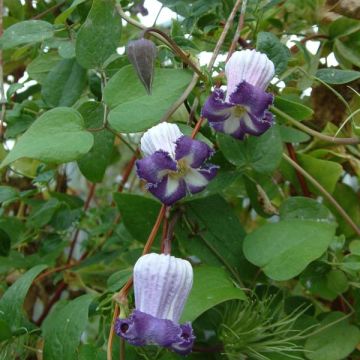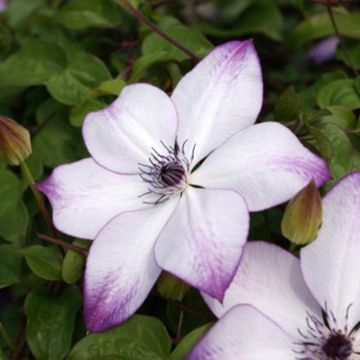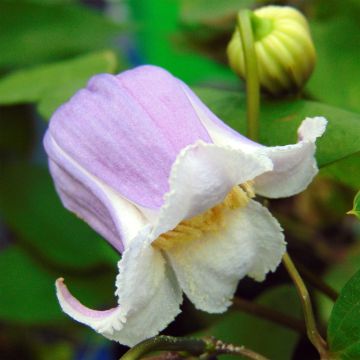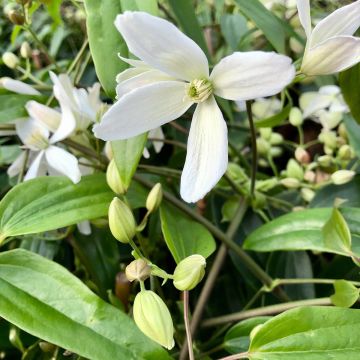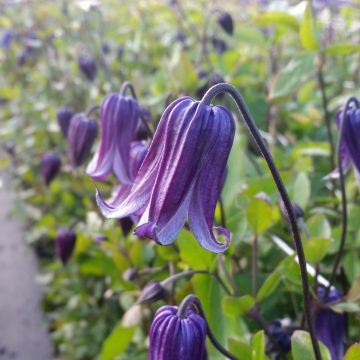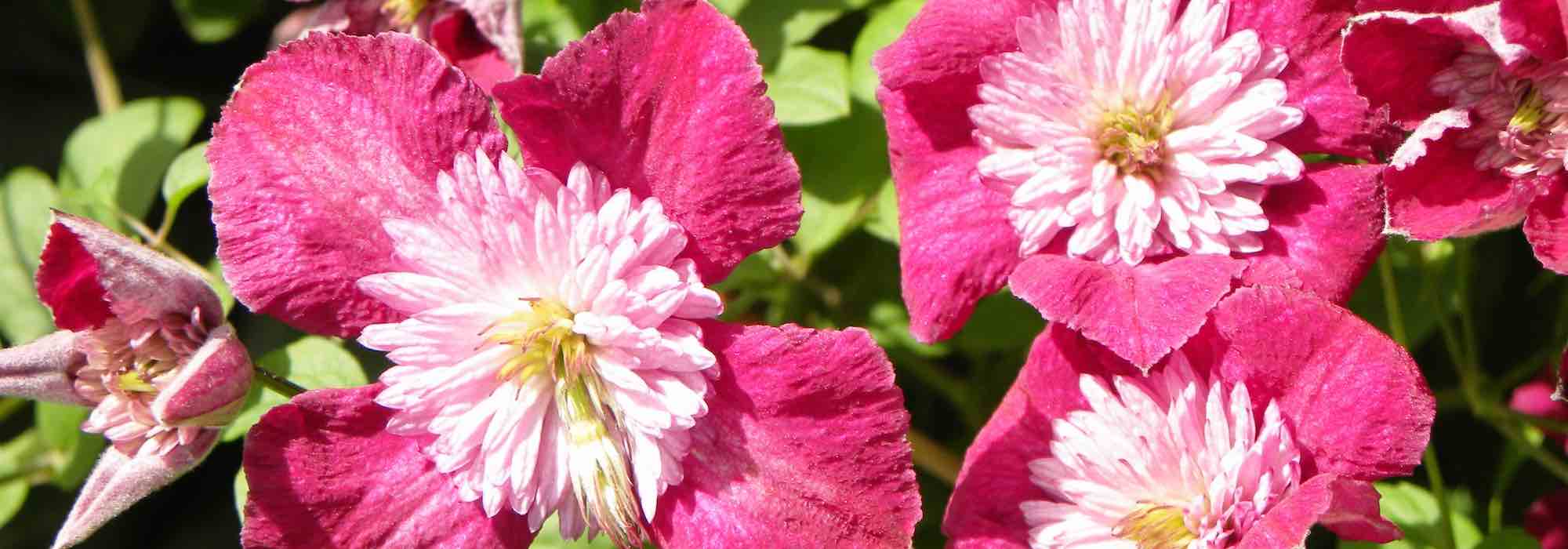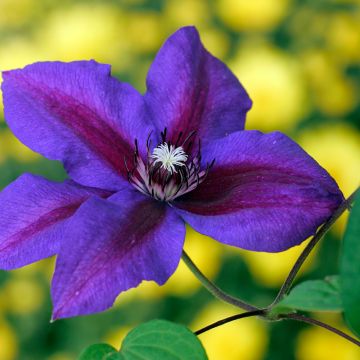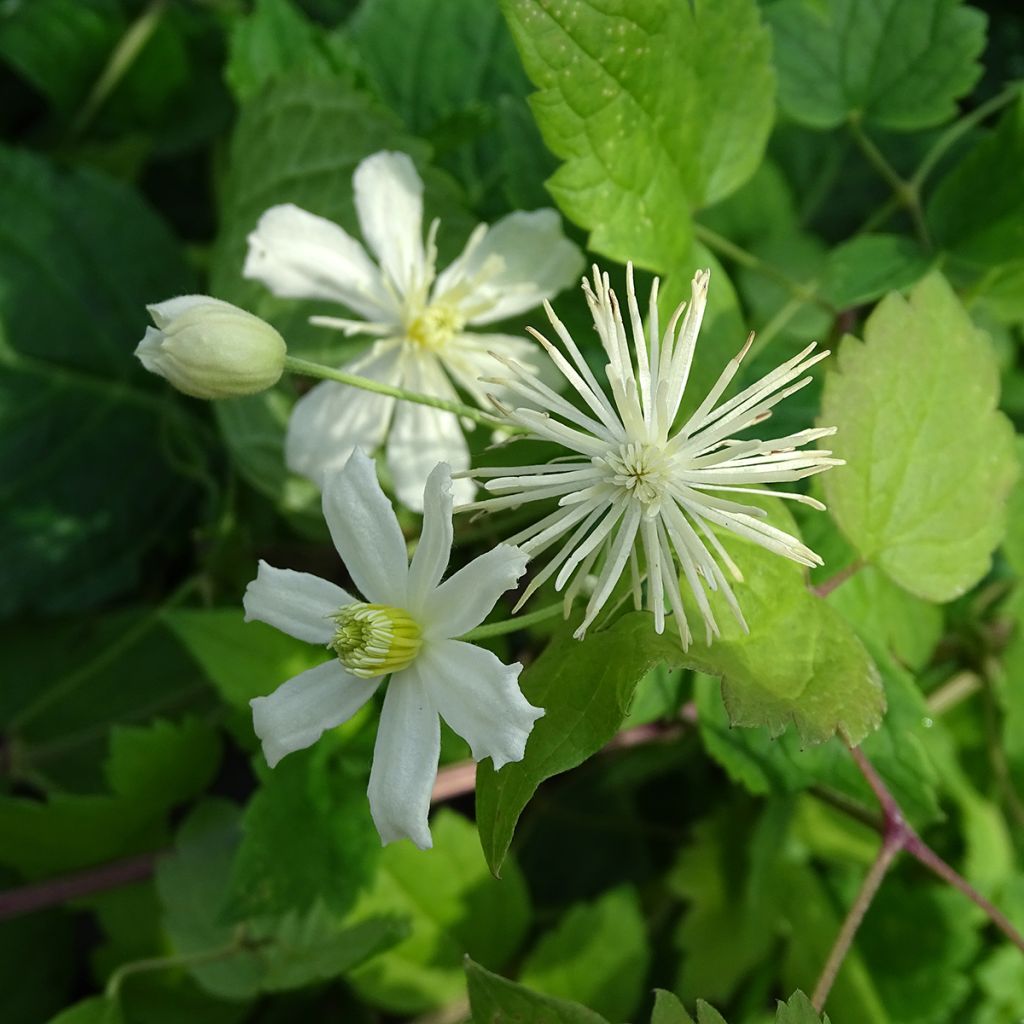

Clematis fargesii Summersnow
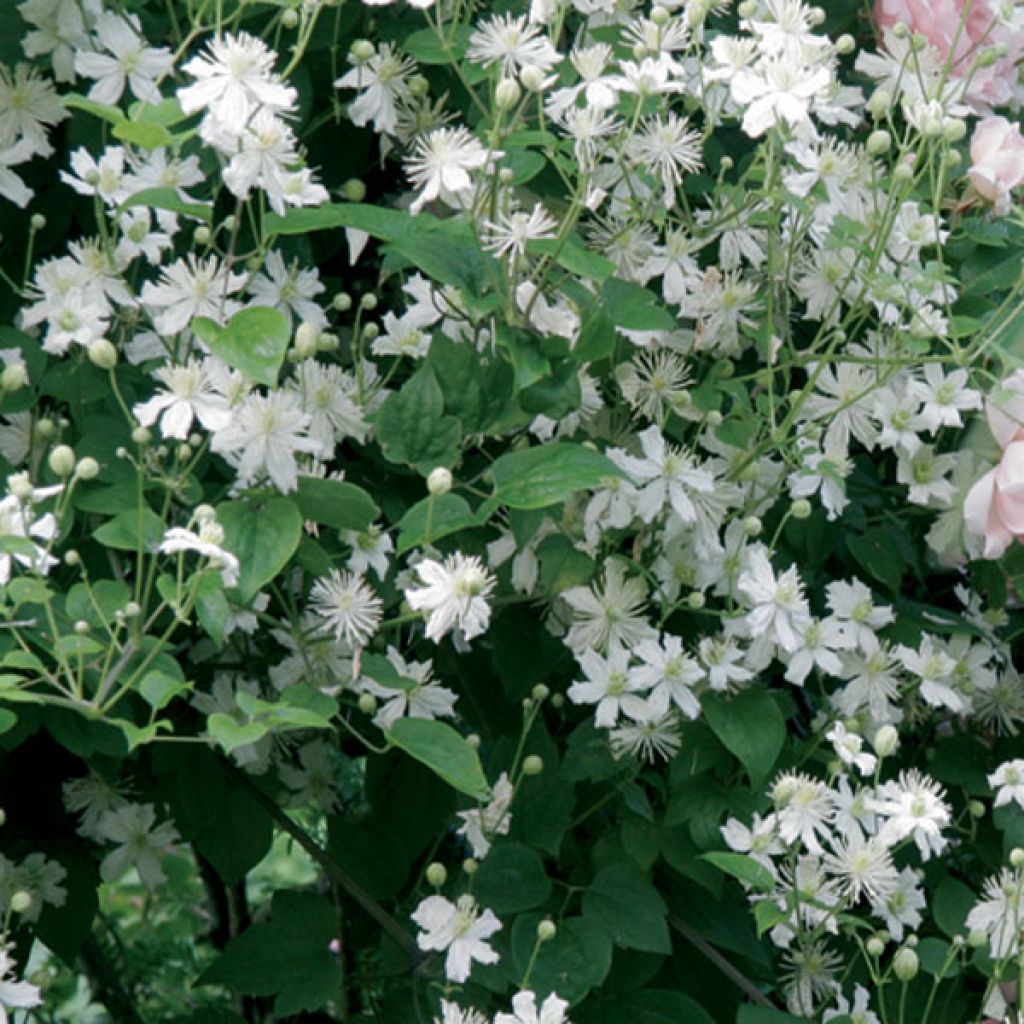

Clematis fargesii Summersnow
Clematis fargesii Summersnow
Clematis fargesii Summersnow
Clematis 'Paul Farges'
The clematis sent clearly came from a greenhouse and didn't cope well with the transport as they arrived all blackened. Fortunately, they benefited from a rainy spring and are bouncing back. I can't wait to see them grow and bloom.
Anna, 02/06/2024
Special offer!
Receive a €20 voucher for any order over €90 (excluding delivery costs, credit notes, and plastic-free options)!
1- Add your favorite plants to your cart.
2- Once you have reached €90, confirm your order (you can even choose the delivery date!).
3- As soon as your order is shipped, you will receive an email containing your voucher code, valid for 3 months (90 days).
Your voucher is unique and can only be used once, for any order with a minimum value of €20, excluding delivery costs.
Can be combined with other current offers, non-divisible and non-refundable.
Home or relay delivery (depending on size and destination)
Schedule delivery date,
and select date in basket
This plant carries a 6 months recovery warranty
More information
We guarantee the quality of our plants for a full growing cycle, and will replace at our expense any plant that fails to recover under normal climatic and planting conditions.

Would this plant suit my garden?
Set up your Plantfit profile →
Description
Clematis fargesii 'Summersnow' is a vigorous climbing perennial that boasts a generous and prolonged flowering. Its long stems easily climb the tallest supports, covering them with its beautiful tender green foliage. From July onwards, a multitude of small white star-shaped flowers appear. They will continue blooming until October.
Like most clematis, 'Summersnow' prefers light, deep, moist, and fertile soil. It appreciates a sunny or partially shaded location, with its base always in the shade. It can withstand cold temperatures and is not affected by frost. However, it does not tolerate stagnant moisture, so the substrate should be well-drained, and watering should be moderate (especially during its establishment).
From mid-summer to mid-autumn, this clematis bears small white flowers on the current year's branches. These flowers consist of 4 to 6 narrow and obovate tepals, with rectangular-shaped tips. They open widely in a star shape, revealing a dense heart composed of multiple long stamens. When tightly packed together, they have a cream-yellow hue, but as they spread, they become white in turn. This slightly tousled form enlivens the green foliage in the background. The tender green leaves are deciduous, compound, and dentate, measuring 6 to 7cm (2 to 3in) long. They are borne on voluble stems that twine around their support. This clematis can reach a height of 5m (16ft) or more.
Clematis 'Summersnow' is a great choice for covering large, somewhat forgotten spaces. Grow it on a hedge of privets, a fence at the back of the garden, or an arch marking the passage to other corners of the garden. It quickly covers its supporting structure and brings a beautiful brightness with its abundant flowering. It harmoniously combines with its cousins of all colours. If you carefully choose the cultivars, the entire season can be filled with flowers. Consider C. Country Rose, C. 'Arabella', and C. 'Francis Rivis'.
Clematis fargesii Summersnow in pictures


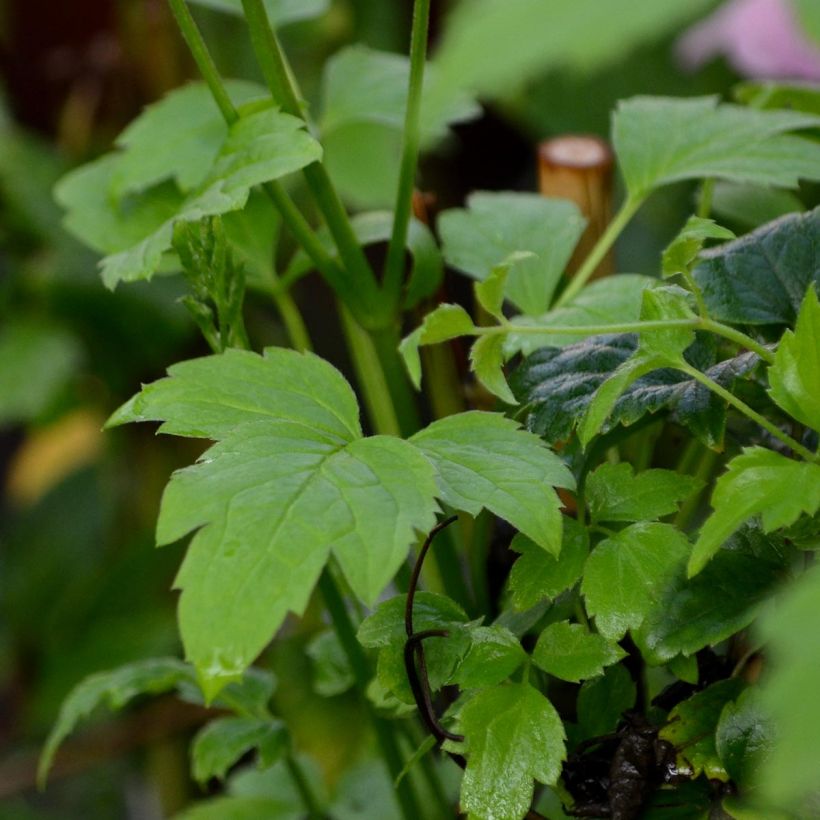

Plant habit
Flowering
Foliage
Botanical data
Clematis
fargesii
Summersnow
Ranunculaceae
Clematis 'Paul Farges'
Cultivar or hybrid
Other Clematis A to Z
View all →Planting and care
Clematis fargesii 'Summersnow' should be planted in spring or autumn, 5cm (2in) deep, with the root ball placed diagonally on the ground. Clematis like their head in the sun (or partial shade) and their roots in shade. You can place a flat tile in front of the stump or use ground cover plants to provide shade. It appreciates rather moist but not waterlogged, deep, well-worked, and rich soils. Cover the foot with a small mound of soil to encourage the emergence of new shoots. After planting, cut the shoots to 30cm (12in) from the base, above a pair of buds.
Train them loosely to help the plant cling on its own later.
Prune after flowering (in early winter) to shorten the secondary shoots. A second pruning in spring, before the vegetation resumes, will allow for a more severe cutting back of some of the main stems (not necessarily every year). Always cut below a pair of buds, about 30 to 40cm (12 to 16in) from the ground. This will promote the emergence of new shoots.
Watch out for pests, such as aphids, slugs, and snails.
Planting period
Intended location
Care
Planting & care advice
-
, onOrder confirmed
Reply from on Promesse de fleurs
Similar products
Haven't found what you were looking for?
Hardiness is the lowest winter temperature a plant can endure without suffering serious damage or even dying. However, hardiness is affected by location (a sheltered area, such as a patio), protection (winter cover) and soil type (hardiness is improved by well-drained soil).

Photo Sharing Terms & Conditions
In order to encourage gardeners to interact and share their experiences, Promesse de fleurs offers various media enabling content to be uploaded onto its Site - in particular via the ‘Photo sharing’ module.
The User agrees to refrain from:
- Posting any content that is illegal, prejudicial, insulting, racist, inciteful to hatred, revisionist, contrary to public decency, that infringes on privacy or on the privacy rights of third parties, in particular the publicity rights of persons and goods, intellectual property rights, or the right to privacy.
- Submitting content on behalf of a third party;
- Impersonate the identity of a third party and/or publish any personal information about a third party;
In general, the User undertakes to refrain from any unethical behaviour.
All Content (in particular text, comments, files, images, photos, videos, creative works, etc.), which may be subject to property or intellectual property rights, image or other private rights, shall remain the property of the User, subject to the limited rights granted by the terms of the licence granted by Promesse de fleurs as stated below. Users are at liberty to publish or not to publish such Content on the Site, notably via the ‘Photo Sharing’ facility, and accept that this Content shall be made public and freely accessible, notably on the Internet.
Users further acknowledge, undertake to have ,and guarantee that they hold all necessary rights and permissions to publish such material on the Site, in particular with regard to the legislation in force pertaining to any privacy, property, intellectual property, image, or contractual rights, or rights of any other nature. By publishing such Content on the Site, Users acknowledge accepting full liability as publishers of the Content within the meaning of the law, and grant Promesse de fleurs, free of charge, an inclusive, worldwide licence for the said Content for the entire duration of its publication, including all reproduction, representation, up/downloading, displaying, performing, transmission, and storage rights.
Users also grant permission for their name to be linked to the Content and accept that this link may not always be made available.
By engaging in posting material, Users consent to their Content becoming automatically accessible on the Internet, in particular on other sites and/or blogs and/or web pages of the Promesse de fleurs site, including in particular social pages and the Promesse de fleurs catalogue.
Users may secure the removal of entrusted content free of charge by issuing a simple request via our contact form.
The flowering period indicated on our website applies to countries and regions located in USDA zone 8 (France, the United Kingdom, Ireland, the Netherlands, etc.)
It will vary according to where you live:
- In zones 9 to 10 (Italy, Spain, Greece, etc.), flowering will occur about 2 to 4 weeks earlier.
- In zones 6 to 7 (Germany, Poland, Slovenia, and lower mountainous regions), flowering will be delayed by 2 to 3 weeks.
- In zone 5 (Central Europe, Scandinavia), blooming will be delayed by 3 to 5 weeks.
In temperate climates, pruning of spring-flowering shrubs (forsythia, spireas, etc.) should be done just after flowering.
Pruning of summer-flowering shrubs (Indian Lilac, Perovskia, etc.) can be done in winter or spring.
In cold regions as well as with frost-sensitive plants, avoid pruning too early when severe frosts may still occur.
The planting period indicated on our website applies to countries and regions located in USDA zone 8 (France, United Kingdom, Ireland, Netherlands).
It will vary according to where you live:
- In Mediterranean zones (Marseille, Madrid, Milan, etc.), autumn and winter are the best planting periods.
- In continental zones (Strasbourg, Munich, Vienna, etc.), delay planting by 2 to 3 weeks in spring and bring it forward by 2 to 4 weeks in autumn.
- In mountainous regions (the Alps, Pyrenees, Carpathians, etc.), it is best to plant in late spring (May-June) or late summer (August-September).
The harvesting period indicated on our website applies to countries and regions in USDA zone 8 (France, England, Ireland, the Netherlands).
In colder areas (Scandinavia, Poland, Austria...) fruit and vegetable harvests are likely to be delayed by 3-4 weeks.
In warmer areas (Italy, Spain, Greece, etc.), harvesting will probably take place earlier, depending on weather conditions.
The sowing periods indicated on our website apply to countries and regions within USDA Zone 8 (France, UK, Ireland, Netherlands).
In colder areas (Scandinavia, Poland, Austria...), delay any outdoor sowing by 3-4 weeks, or sow under glass.
In warmer climes (Italy, Spain, Greece, etc.), bring outdoor sowing forward by a few weeks.































